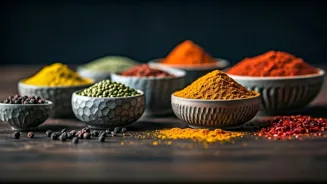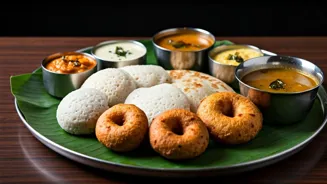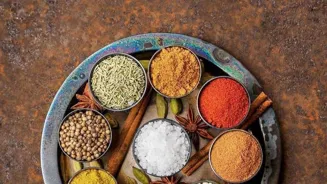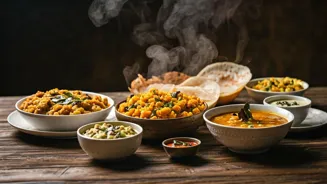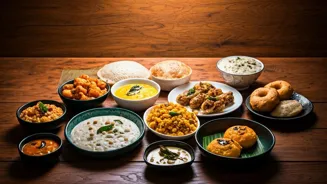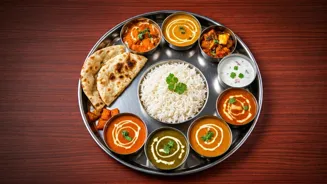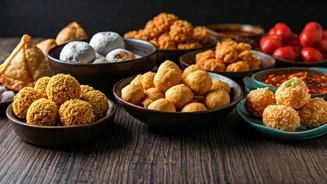Historical Culinary Roots
Indian cuisine has a history stretching back thousands of years, with influences from various cultures that have shaped its evolution. The Indus Valley
Civilization laid some of the earliest culinary foundations, while interactions with the Persians, Mughals, and Europeans have added layers of complexity. For example, the use of spices like turmeric, cumin, and cardamom has ancient roots, originating from the Indian subcontinent and used for both flavor and medicinal properties. Mughal influence introduced rich gravies, the tandoor oven, and intricate cooking techniques like dum pukht, where food is cooked slowly in sealed containers. The British brought new ingredients and food preparation methods, which resulted in innovative culinary hybrids. The availability and use of local ingredients are key to understanding the vast regional differences found in Indian cooking, with each region having its own unique combination of spices, flavors, and techniques. Overall, the history of Indian food is a complex tapestry, reflecting the constant exchange and adaptation that has created the rich, complex, and diverse culinary landscape we know today.
Regional Culinary Variations
India's diverse geography and climate contribute to its extensive range of regional cuisines. In the north, expect rich, creamy dishes with an emphasis on dairy products, nuts, and wheat-based breads. Think of dishes like butter chicken from Punjab, or the creamy korma dishes associated with the Mughlai influence. Moving to the east, Bengali cuisine offers delicate flavors, using mustard oil and fresh seafood, as well as a focus on sweets made from rice, milk, and sugar. The western region, particularly in states like Maharashtra and Gujarat, features diverse influences including both vegetarian and non-vegetarian options, with a focus on spices and specific regional ingredients like coconut and peanuts. In the south, dishes are characterized by the use of rice, lentils, and coconut milk. Spices like curry leaves, tamarind, and black pepper are used to create the distinct flavors of dishes like idli, dosa, and sambhar. Even within these major regions, there are countless sub-variations, reflecting local ingredients and unique cooking styles that make up the incredible culinary landscape of India.
Essential Cooking Ingredients
Indian cuisine's uniqueness relies on a vibrant palette of ingredients. Spices are the core, each bringing a distinct flavor, color, and aroma. Turmeric is used for its vibrant color and anti-inflammatory properties. Cumin provides an earthy base, while coriander offers a citrusy note. Chilies add varying levels of heat, and cardamom provides a warm, sweet flavor. Ghee, or clarified butter, serves as a cooking medium and flavor enhancer, as well as adding a depth to many traditional dishes. Lentils and pulses are crucial for vegetarian protein sources, including dishes like dal (lentil stew). Rice serves as a staple in many regions, and wheat flour forms the basis of various breads like roti and naan. Fresh herbs, such as cilantro, mint, and fenugreek, add refreshing notes. The balance of these ingredients, and their proper preparation and use, distinguishes Indian cuisine.
Iconic Cooking Techniques
Various techniques contribute to the distinctive flavor and character of Indian dishes. The tandoor oven, a clay oven heated by charcoal, is used to make breads like naan and tandoori dishes. Spices are often dry-roasted or bloomed in hot oil to release their flavors. The process of tempering, where whole spices are fried in hot oil or ghee, infuses the cooking oil with aroma. Dum pukht involves slow cooking in a sealed pot, allowing flavors to meld beautifully. Grinding and blending spices into masalas, or spice mixtures, creates a base for curries and other dishes. The layering of flavors is a hallmark of Indian cooking. Ingredients are often cooked in stages, allowing each to contribute its individual flavor, texture, and aroma. These techniques, passed down through generations, are crucial to creating the unique character of Indian dishes.
Must-Try Dishes
Exploring Indian cuisine means experiencing a range of iconic dishes. Butter chicken, a creamy tomato-based chicken curry, is a popular North Indian delight. Biryani, a mixed rice dish, combines fragrant rice with meat or vegetables. Dal makhani, made with black lentils and kidney beans, offers a rich, creamy texture. Samosas, deep-fried pastries filled with potatoes and spices, are a beloved snack. Dosa, a thin crepe made from fermented batter, is a popular South Indian breakfast. Palak paneer, a spinach and cheese dish, provides a nutritious meal. These dishes showcase the diversity and richness of Indian food.
The Art of Spicing
The skillful use of spices is fundamental to Indian food. Different spices are combined to create unique flavor profiles, from mild to intensely hot. The amount of spice used is adjusted according to the dish and the region. Each spice contributes more than just flavor: turmeric, for example, adds color and has anti-inflammatory properties. Coriander seeds add aroma, and cumin seeds provide warmth. The art involves understanding how various spices interact, and when and how to add them during cooking. Proper grinding and blending are key, with each spice releasing its full potential. Mastering the art of spicing is key to creating the diverse and complex flavors that characterize Indian food, making it a fascinating and satisfying culinary experience.
Indian Food & Culture
Food in India is deeply entwined with culture, traditions, and social customs. Food plays an essential role in celebrations, festivals, and religious ceremonies. Dietary habits vary across regions and communities, with vegetarianism prevalent in some areas. Sharing meals brings communities together, and food plays a significant role in hospitality and social interactions. Traditional cooking methods are often passed down through families. Indian food is more than just sustenance; it reflects the values, beliefs, and social dynamics of the people.
